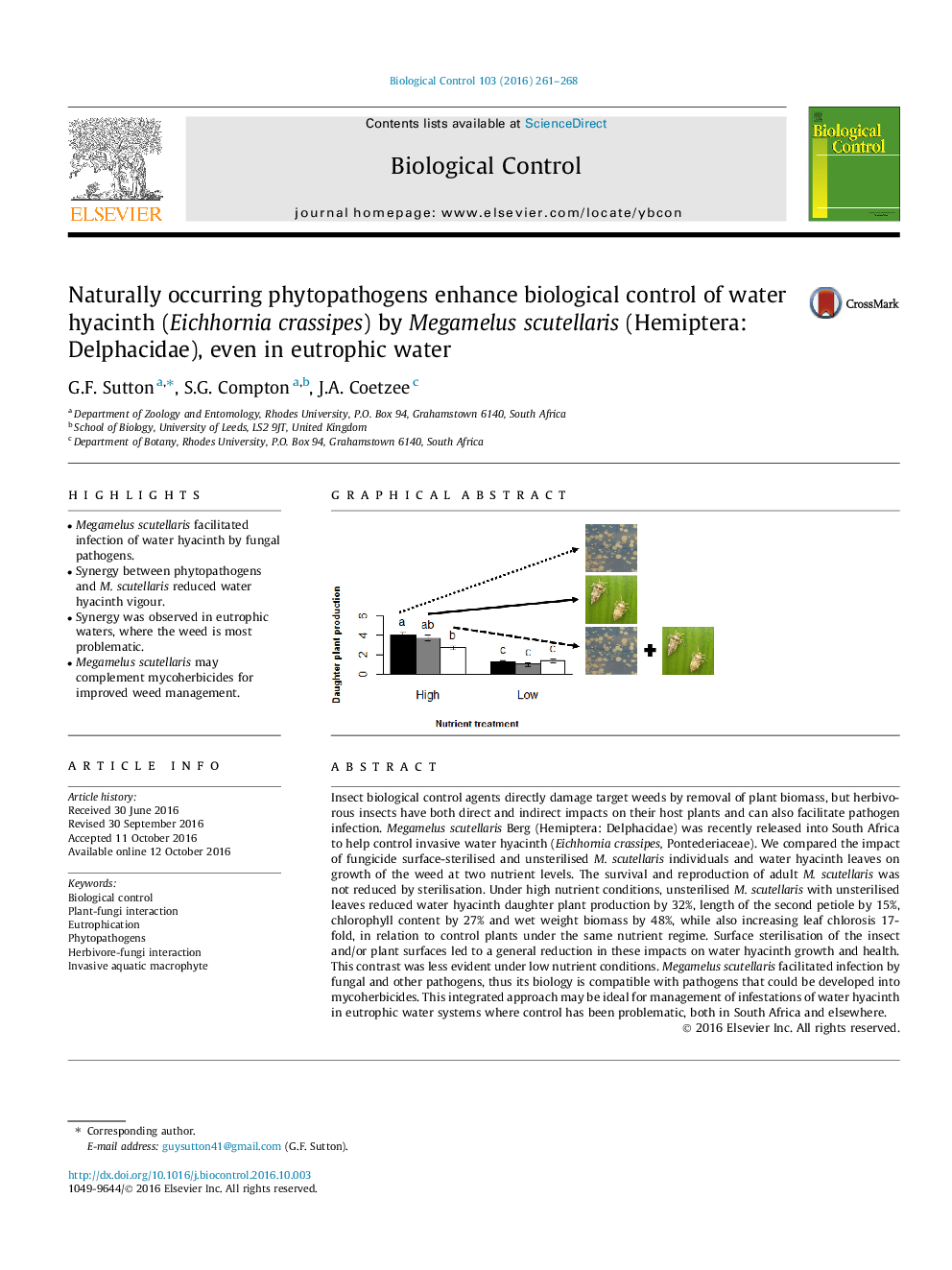| کد مقاله | کد نشریه | سال انتشار | مقاله انگلیسی | نسخه تمام متن |
|---|---|---|---|---|
| 4503557 | 1624231 | 2016 | 8 صفحه PDF | دانلود رایگان |

• Megamelus scutellaris facilitated infection of water hyacinth by fungal pathogens.
• Synergy between phytopathogens and M. scutellaris reduced water hyacinth vigour.
• Synergy was observed in eutrophic waters, where the weed is most problematic.
• Megamelus scutellaris may complement mycoherbicides for improved weed management.
Insect biological control agents directly damage target weeds by removal of plant biomass, but herbivorous insects have both direct and indirect impacts on their host plants and can also facilitate pathogen infection. Megamelus scutellaris Berg (Hemiptera: Delphacidae) was recently released into South Africa to help control invasive water hyacinth (Eichhornia crassipes, Pontederiaceae). We compared the impact of fungicide surface-sterilised and unsterilised M. scutellaris individuals and water hyacinth leaves on growth of the weed at two nutrient levels. The survival and reproduction of adult M. scutellaris was not reduced by sterilisation. Under high nutrient conditions, unsterilised M. scutellaris with unsterilised leaves reduced water hyacinth daughter plant production by 32%, length of the second petiole by 15%, chlorophyll content by 27% and wet weight biomass by 48%, while also increasing leaf chlorosis 17-fold, in relation to control plants under the same nutrient regime. Surface sterilisation of the insect and/or plant surfaces led to a general reduction in these impacts on water hyacinth growth and health. This contrast was less evident under low nutrient conditions. Megamelus scutellaris facilitated infection by fungal and other pathogens, thus its biology is compatible with pathogens that could be developed into mycoherbicides. This integrated approach may be ideal for management of infestations of water hyacinth in eutrophic water systems where control has been problematic, both in South Africa and elsewhere.
Figure optionsDownload as PowerPoint slide
Journal: Biological Control - Volume 103, December 2016, Pages 261–268